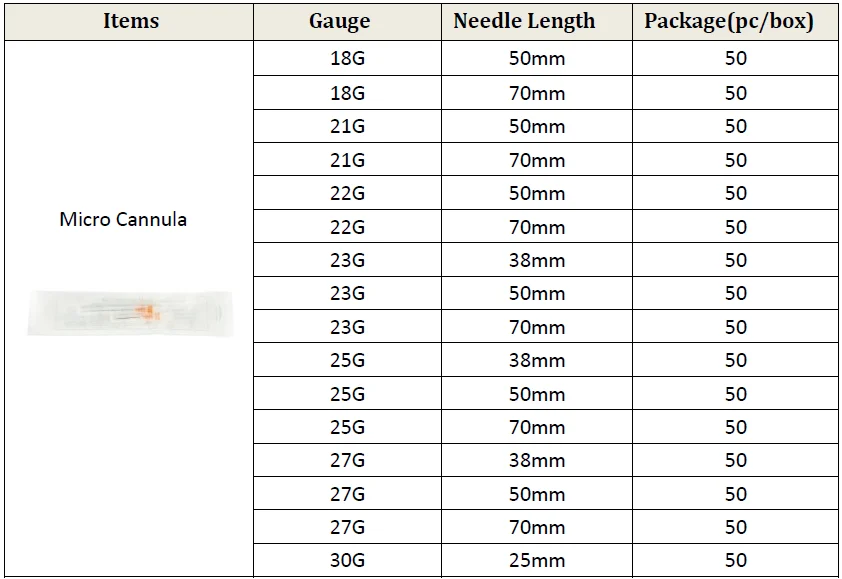
Disposable Stainless Steel Types Of Cannula And Sizes 18g 21g 22g 23g 25g 27g Blunt Tip Fine
Present day IV cannulae are available from sizes 14 gauge to 26 gauge with universal color coding for easy recongnition of IV cannula. Smaller the gauge, wider is the cannula and has higher flow rate. Normal adult size: 18-20 G Situations requiring rapid fluid transfusion like trauma: 14-16 G Preferred pediatric size: 22 G
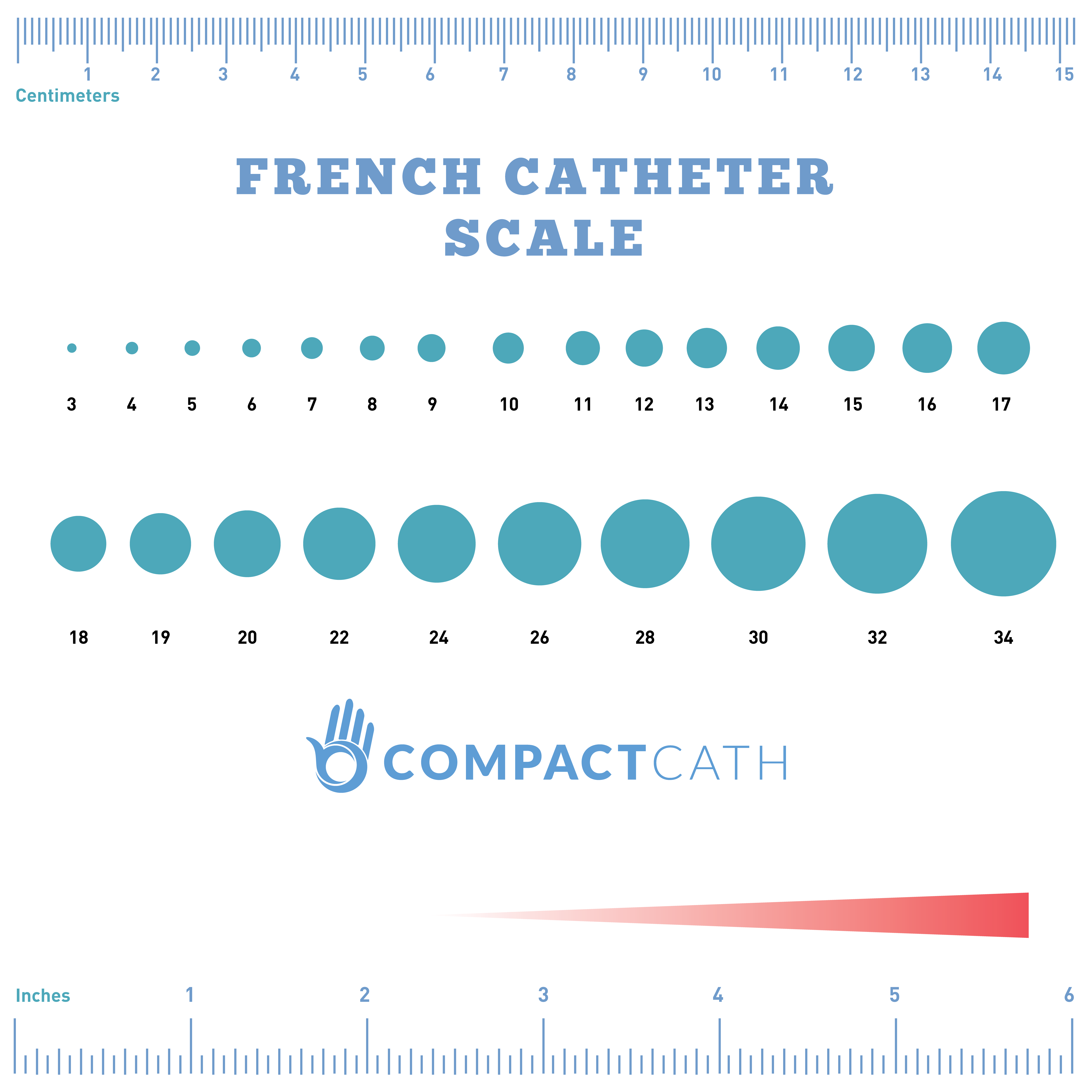
Urinary Catheter Types and Sizes CompactCath
• a large cannula can occlude a small vein (figure 2) or can lead to damage of the intima e.g. chemical phlebitis (figure 3) Figure 1 Figure 2 Figure 3 Parts of a Cannula This type of ported cannula is widely used in the Trust. Other cannulae may be used and flow rates will vary. Cannulae sizes range from 14G- largest, to 24g smallest.

Dream180 (Dream18010) Twitter
Cannula (size appropriate to the indication for cannulation) Sterile dressing pack (to provide a sterile field) Cannula dressing Luer lock cannula cap or extension set Gauze swabs Normal saline 0.9% (10 ml) Syringe (10ml) Alcohol swab (2% chlorhexidine gluconate in 70% isopropyl) Sharps container Gather equipment

IV Cannula in Ahmedabad, चौथाई कैनुला, अहमदाबाद, Gujarat IV Cannula, IV Catheters Price in
Healthcare professionals typically consider sizes ranging from 16 to 18 gauges for blood transfusions. Intravenous (IV) cannulas are essential medical devices administer fluids, medications, or blood products directly into a patient's bloodstream. These devices come in various types and sizes to cater to different medical needs.
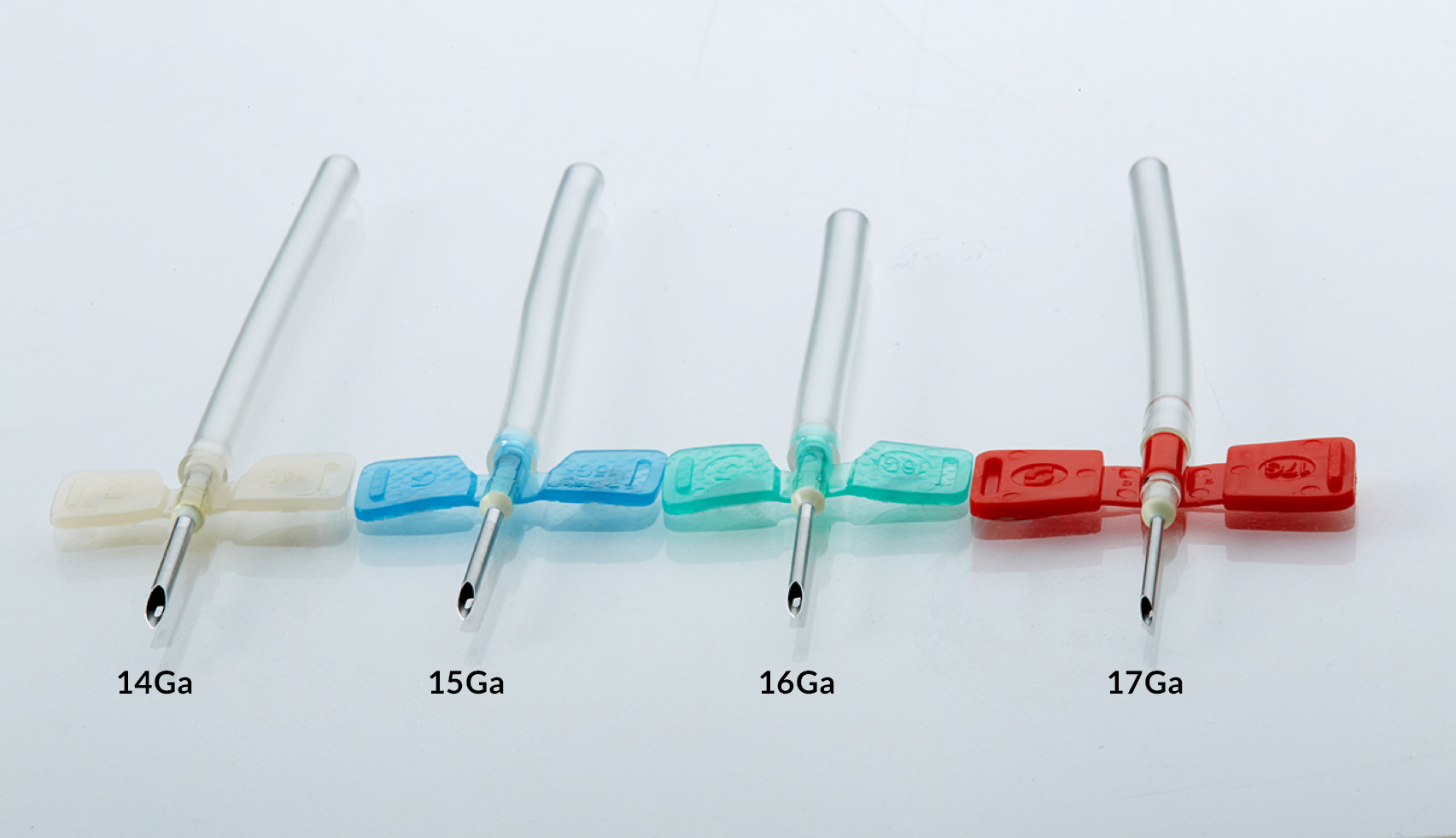
AV Fistula Needles with Masterguard NxStage
Cannula Gauge Sizes and Color Code Injection port caps are color coded for instant identification of cannula gauge size. The size of cannula effects four factors Needle gauge External diameter of cannula Length of catheter Flow rate i.e. ml/min As the gauge number increases the cannula size decreases (14 largest and 24 smallest)

1PC Steel I.V. Catheter Cannula Piercing Needles 14G 16G 18G 20G Body Jewlery Piercing Tool
The size of the cannula is determined by the diameter of the tube, measured in gauge, with smaller gauge numbers indicating larger diameters. In the United States, the most common sizes and colors for peripheral cannulas are:
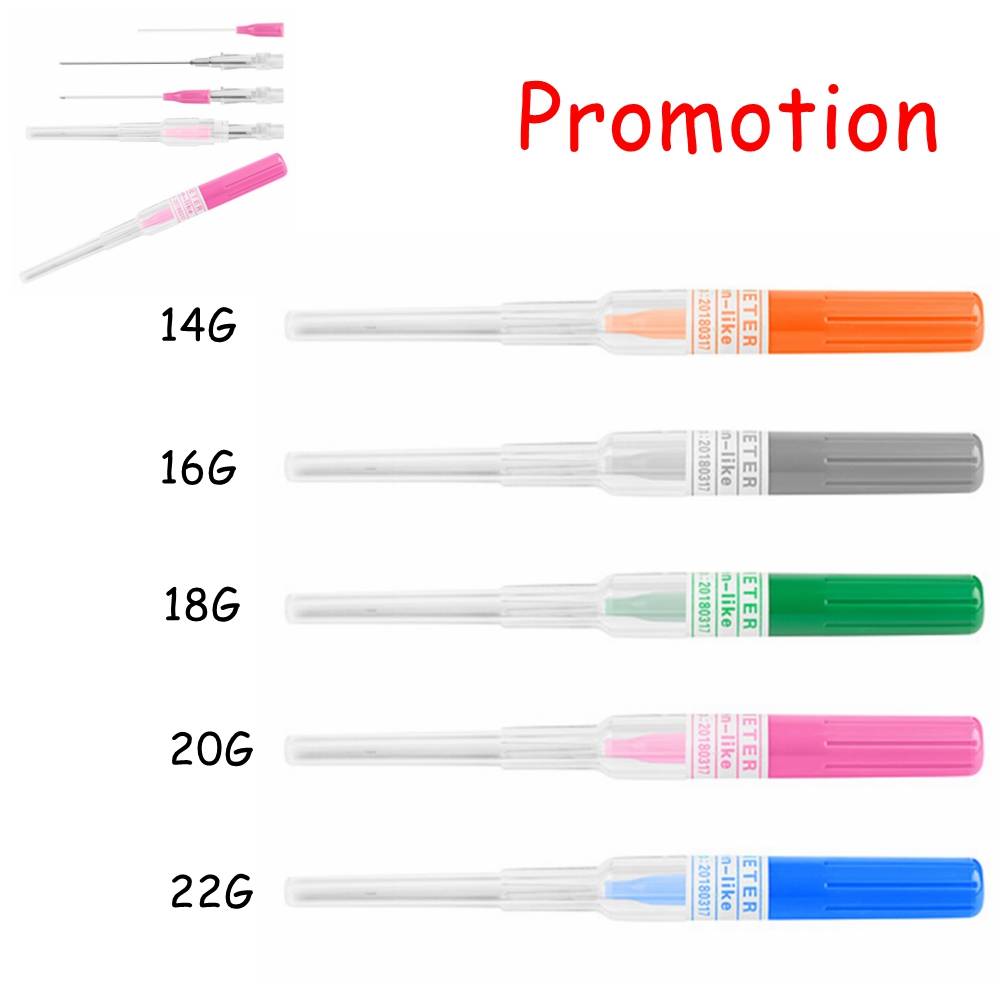
1PC Professional Steel I.V. Catheter Cannula Piercing Needles 14G 16G 18G 20G 22G Body Jewelry
Before beginning it is important to choose the correct size of cannula. The options, in order of decreasing bore size, are 16 gauge (grey) for surgical emergencies; 18 gauge (green) for blood transfusions; 20 gauge (pink) for maintenance of intravenous fluids; and 22 gauge (blue) for difficult veins, slow intravenous fluids, or intravenous.

IV Cannula with Luer Lock, Wings and Injection Port, IV Catheters, Intravenous Cannula, Cannula
Commonly used sizes for IV cannula catheters include: 1. 14 to 24 Gauge: Larger-sized cannulas (14G) are used for rapid infusion of fluids or blood products, while smaller sizes (24G) are suitable for administering medications and solutions that do not require high flow rates.
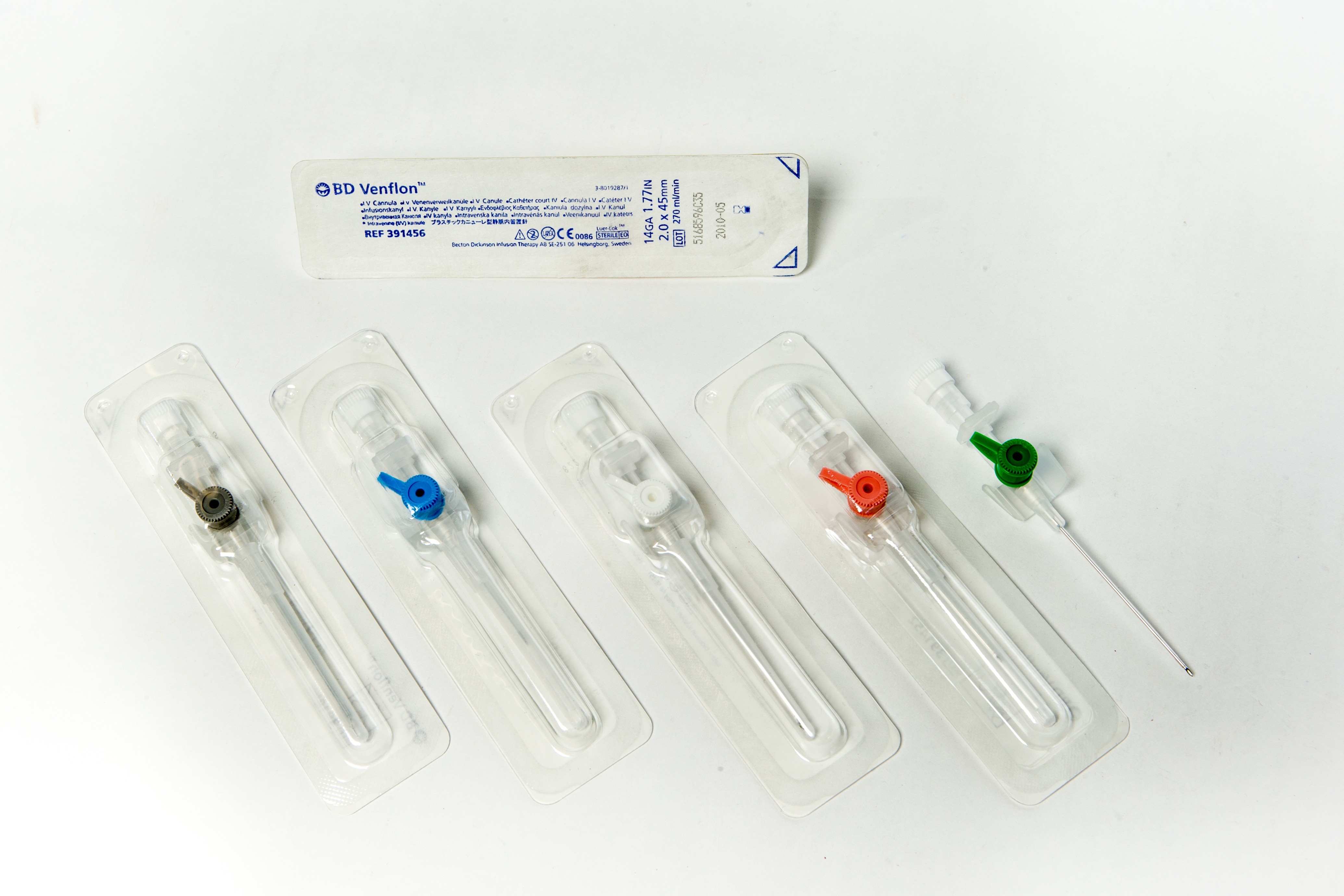
Cannula (Venflon) 6 Sizes
Definition Purpose Insertion IV cannula types Nasal cannula types Vs. catheter Risks Summary A cannula is a thin tube that doctors insert into a person's body cavity, such as their nose, or.

Venflon Green 18G 45mm IV Cannulas Dental Products
Midline catheter: Different Sizes of Cannula Cannula size 14G Cannula Size 16G Cannula size 17G Cannula size 18G Cannula size 20G Cannula size 22G Cannula size 24G Cannula 26G Important Features of an IV Cannula Important Considerations while using the IV cannula Different Types of IV cannula sizes
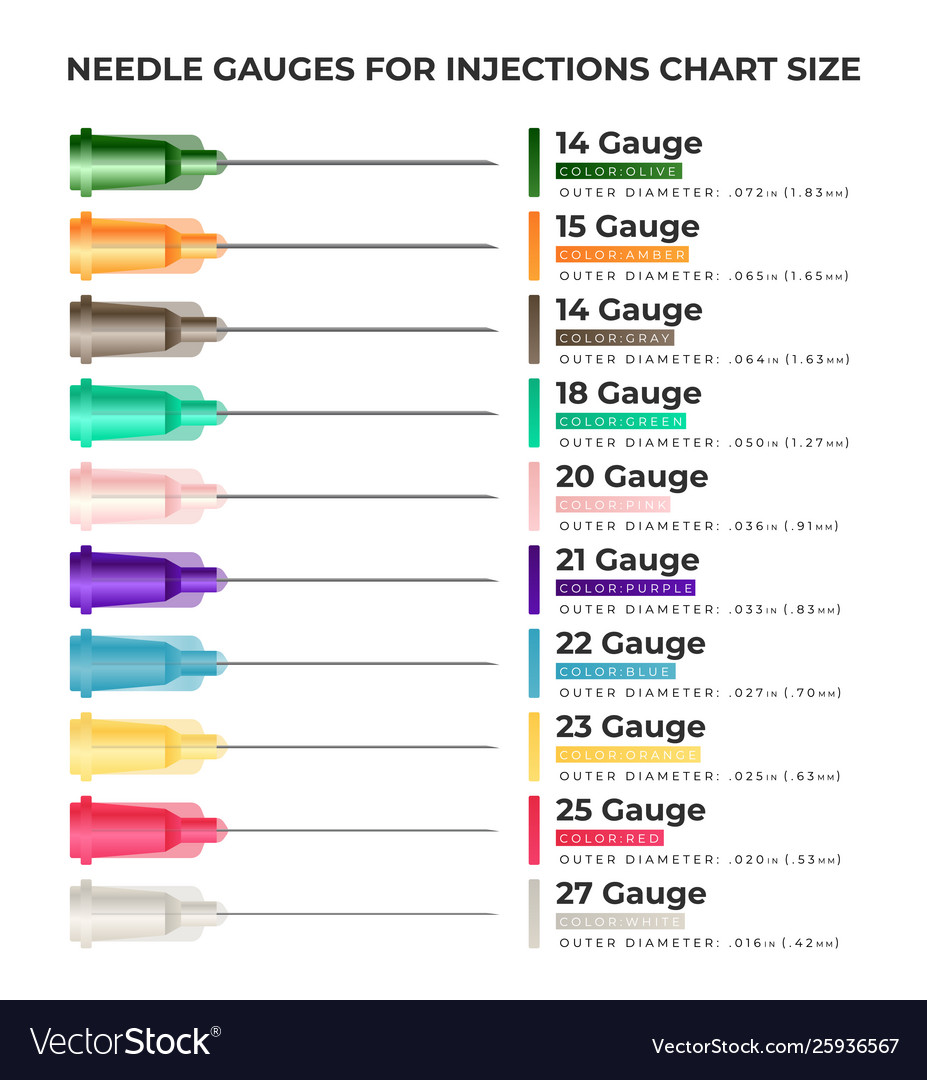
Needle gauges for injections chart size Royalty Free Vector
Cannula size differs depending on the procedure and the comfort levels of the patient, so an injector should always keep these considerations in mind before using any of these cannulas on a patient. 1. Intravenous Cannula. 22 Gauge 100 mm (4 inch) Microcannulas. 27 Gauge 38 mm (1.5 inch) Microcannulas. 25 Gauge 38 mm (1.5 inch) Microcannulas.
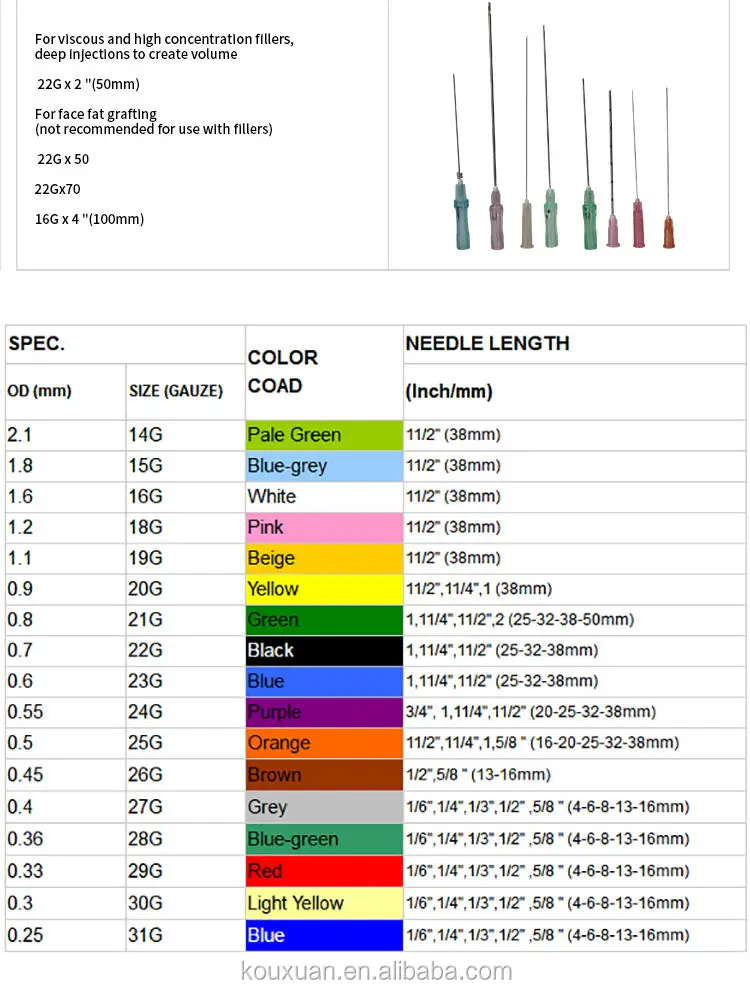
Disposable Beauty Dermal Fillers Cannula Face Lift Medical Stainless Steel Sterilized Blunt
For normal adult patients, the recommended cannula size is typically 18-20 G. However, in situations that require rapid fluid transfusion, such as trauma cases, a larger size of 14-16 G may be necessary to ensure efficient delivery of fluids. Pediatric patients, including infants and neonates, require smaller cannula sizes for their delicate veins.

Nursing school studying, Nursing school, Nursing school tips
Its size mainly ranges from 14 to 26 [2] gauge. Different-sized cannula have different colours as coded. Decannulation is the permanent removal of a cannula ( extubation ), [3] especially of a tracheostomy [4] cannula, once a physician determines it is no longer needed for breathing. Medicine Cannulas normally come with a trocar inside.
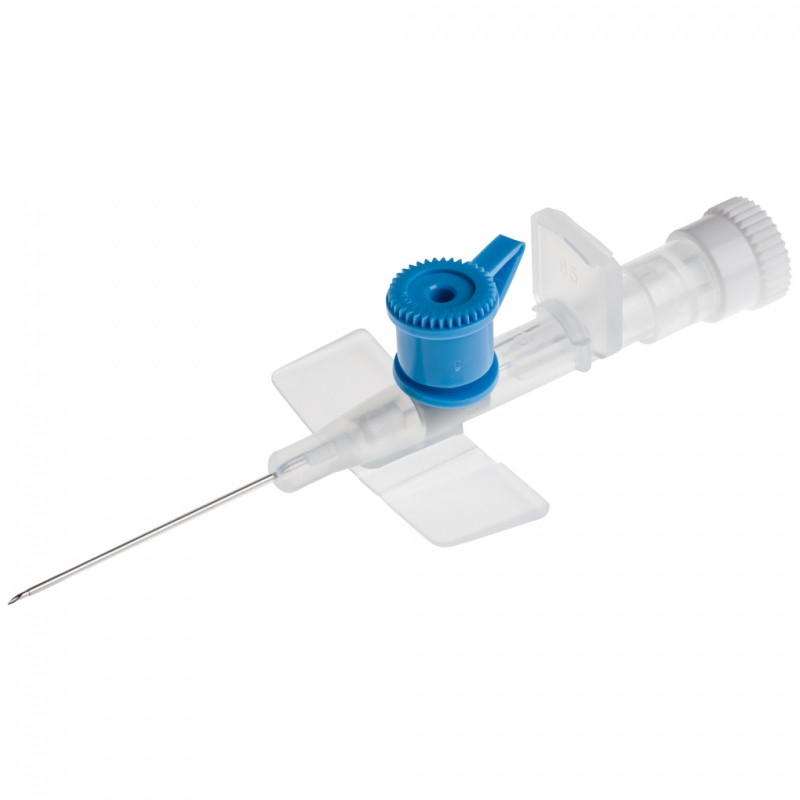
BD Venflon IV Cannula with Injection Port 22G Blue 25mm
They have a top flow rate of around 60-70 ml/min and have pink color coding for easy identification. This is typically the most common catheter size used in many hospitals, and it's an ideal size for most fluid and medication infusions, as well as blood transfusions. 22 Gauge Catheters

IV Cannula in Jaipur, चौथाई कैनुला, जयपुर, Rajasthan IV Cannula, IV Catheters Price in Jaipur
10. Now imagine that the height of the bag and length of the cannula are still fixed, but the hospital wants the gauge size to be directly proportional to speed of the fluid in the cannula. Write a function for the radius of the cannula (as a function of the gauge number) that would achieve this according to our model. Mark Eichenlaub 11/02/17

20201125071101
What are types of IV cannulas? IV cannula subtypes include the peripheral IV cannula, the central IV cannula, and the draining cannulas.There are also several sizes of intravenous cannulas. The most common sizes range from 14 to 22 gauge. The higher the gauge number, the smaller the cannula.Different sized cannulas move liquid through them at different rates.